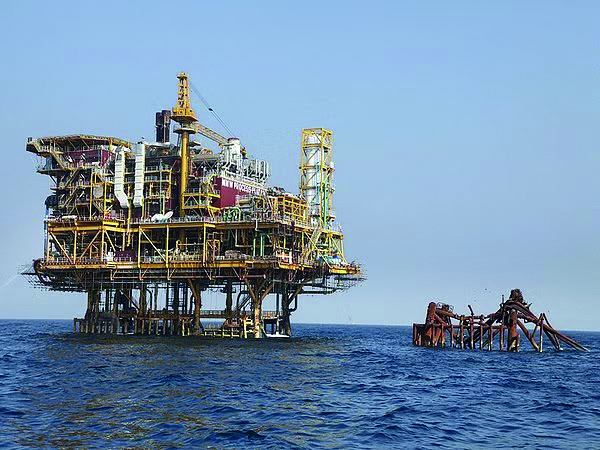ONGC strikes double bonanza with back-to-back gas discoveries in the Bay of Bengal

New Delhi: State-owned Oil and Natural Gas Corporation (ONGC) has pulled off a remarkable feat, scoring two consecutive natural gas discoveries in a high-risk deepwater block within the Bay of Bengal’s Mahanadi basin. This success marks the exciting payoff of their strategic venture into challenging deepwater exploration territory.
The discoveries were made in block MN-DWHP-2018/1, awarded to ONGC in 2019’s third Open Acreage Licensing Policy auction. Notably, this area was previously deemed off-limits due to national security concerns.
The first find, named Uktal, lies at a depth of 714 meters and yielded an impressive initial flow exceeding 3 lakh cubic meters of gas per day. The second discovery sits even deeper, at 1,110 meters. ONGC has duly reported these discoveries to the Directorate General of Hydrocarbons (DGH) and is currently evaluating their pool size and commercial viability.
For a nation heavily reliant on gas imports, these finds hold immense promise for India’s energy security. The country aims to significantly increase the share of natural gas in its energy mix, from the current 6.3 per cent to 15 per cent by 2030, a goal that domestic production will heavily contribute to. Natural gas plays a crucial role in India’s journey towards achieving net-zero carbon emissions by 2070. As the nation gradually transitions away from polluting fossil fuels, the cleaner-burning gas serves as a crucial bridge fuel.
Extracted from deep within the earth or seabed, natural gas finds numerous applications.
It fuels power generation, fertilizers, CNG vehicles, and household kitchens. Increasing its use will help displace coal in power plants and liquid fuels in various industries.
Sources attribute ONGC’s rapid exploration progress to the government’s recent decision to open up nearly one lakh square kilometers previously restricted for oil and gas exploration. This “no-go” zone, overlapping with missile testing and satellite launch routes, saw over 98 per cent of its restrictions lifted in 2022, allowing energy companies to deploy vessels and drillships for exploration.
In the MN-DWHP-2018/1 block, ONGC acquired 1,432.14 sq km of 3D seismic data before drilling well MNDW181H-B-1 in
August 2023. This historic well, the first of its kind under the OALP regime, was drilled by the mighty West Polaris drillship.
Experts predict these Mahanadi offshore successes will act as a catalyst for opening up new exploration frontiers, attracting increased investments. Significantly, ONGC recently
signed a memorandum of understanding (MoU) with French energy giant TotalEnergies to exchange information on deepwater acreage, particularly in the Mahanadi and Andaman basins. This collaboration aims to leverage Total’s expertise in deepwater exploration and production, potentially leading to their participation in ONGC acreage.
Furthermore, ONGC has previously entered into similar agreements with ExxonMobil for deepwater exploration on both the east and west coasts. These partnerships, focusing on the Krishna Godavari, Cauvery,
and Kutch-Mumbai basins, demonstrate ONGC’s proactive approach to attract global giants and accelerate India’s energy independence journey.
The Mahanadi basin’s exploration success, therefore, serves as a significant stepping stone not only for ONGC but also for India’s broader energy security ambitions. It paves the way for increased domestic gas production, cleaner energy choices, and potentially, collaboration with leading global energy players.



